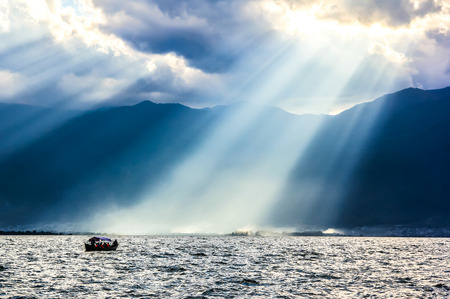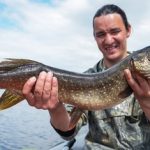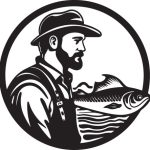1. Introduction to Off-the-Grid Kayak Fishing
Theres something truly special about leaving the hustle and bustle behind and heading out into the wild, especially in the Pacific Northwest. Off-the-grid kayak fishing is more than just a way to catch fish — its a lifestyle, an adventure, and a chance to reconnect with nature on your own terms.
The Pacific Northwest is home to some of the most stunning and remote waters in the United States. From hidden alpine lakes to winding coastal inlets, this region offers endless opportunities for anglers who are willing to paddle a little farther and explore a little deeper. With no roads, no crowds, and no cell signal, these remote spots are perfect for those looking to fish in peace and solitude.
Why Choose Kayak Fishing Off the Grid?
Kayak fishing gives you access to places that boats with motors cant reach — shallow bays, narrow streams, and secluded coves. It also keeps things simple and quiet, allowing you to get closer to fish without spooking them. But beyond the practical benefits, theres an undeniable sense of freedom that comes with paddling into untouched waters under your own power.
The Appeal of Remote Waters
Fishing off the grid isnt just about catching fish — its about the journey. Youre surrounded by towering evergreens, misty shorelines, and the sound of water lapping against your kayak. Its peaceful, meditative even. And every cast feels like part of something bigger: a connection to the land, the water, and yourself.
Top Reasons Anglers Love Off-the-Grid Kayak Fishing
| Reason | Description |
|---|---|
| Solitude | Escape crowded fishing spots and enjoy peaceful surroundings. |
| Adventure | Each trip feels like an expedition into untouched wilderness. |
| Access | Reach hidden fishing holes that are inaccessible by larger boats. |
| Simplicity | Minimal gear, less noise, more focus on the experience. |
| Nature Connection | Feel more in tune with your surroundings without modern distractions. |
If youre looking for an authentic outdoor experience that combines angling with exploration, off-the-grid kayak fishing in the Pacific Northwest might just be your next favorite adventure.
2. Essential Gear and Kayak Setup
Kayak fishing in the remote waters of the Pacific Northwest is all about being prepared for rugged conditions and unpredictable weather. Whether youre exploring alpine lakes, coastal bays, or winding rivers, having the right gear can make or break your trip. Heres what you need to know when setting up for off-the-grid angling adventures.
Choosing the Right Kayak
Not all kayaks are created equal—especially when youre paddling into remote wilderness. Stability, storage capacity, and portability are key features to consider. Here’s a quick breakdown:
| Kayak Type | Best For | Pros | Cons |
|---|---|---|---|
| Sit-on-Top (SOT) | Coastal and open water fishing | Easy to get on/off, self-draining, stable | Exposed to elements, heavier |
| Sit-Inside (SIK) | Lakes and colder inland waters | More protection from cold/wind, lighter | Less mobility, harder to re-enter if capsized |
| Pedal-Drive Kayaks | Hands-free fishing in calm waters | Efficient movement, more control while casting | Expensive, heavier to transport |
Safety Gear Essentials
The Pacific Northwest is known for sudden weather changes and cold water temps—even in summer. Safety should be your top priority.
- PFD (Personal Flotation Device): Always wear a U.S. Coast Guard-approved life vest designed for kayak fishing.
- Paddle Leash: Keeps your paddle secured if dropped.
- Bilge Pump or Sponge: Useful for sit-inside kayaks to remove water.
- Whistle or Air Horn: Required by law in many areas for signaling.
- Drysuit or Wetsuit: Especially important for early spring/fall trips or offshore excursions.
- Communication Device: VHF radio or satellite messenger in case youre out of cell range.
Rods, Reels & Tackle Specific to PNW Waters
The fish species youll encounter—from salmon and steelhead to lingcod and rockfish—require tackle tailored to their size and habitat.
| Target Species | Rod Type | Reel Type | Tackle Recommendations |
|---|---|---|---|
| Salmon (Chinook/Coho) | Medium-heavy casting rod (7–9) | Baitcasting reel with strong drag system | Divers, flashers, herring rigs, spoons |
| Steelhead/Trout | Light to medium spinning rod (6–8) | Smooth-drag spinning reel (2500–3000 series) | Spoons, spinners, soft plastics, jigs under floats |
| Lingcod/Rockfish | Heavy action rod (6–7) | Conventional reel with braid line capacity | Jigs, swimbaits, metal spoons, squid imitations |
Tackle Storage & Onboard Organization Tips
- Tackle Crate: Use a milk crate with rod holders zip-tied on for easy access behind your seat.
- Tackle Trays: Label trays by species or technique so you can swap them based on your target fish.
- D-Rings & Bungees: Secure everything—waves and sudden movements can send gear overboard fast.
A Quick Word on Portability & Transport Options
If youre venturing far off the grid, youll need a way to get your kayak there. Consider inflatable kayaks rated for fishing—theyre durable and pack down small enough for backpacking into alpine lakes. Alternatively, roof racks with kayak saddles work well for forest roads leading to more accessible remote waters.
The Pacific Northwest rewards those who come prepared. With the right gear dialed in, you’ll be ready to chase wild fish through some of the most breathtaking backcountry waters in America.

3. Navigating the Pacific Northwest Wilderness
Exploring the remote fishing waters of the Pacific Northwest by kayak is an unforgettable adventure—but it also requires solid navigation skills and local knowledge to stay safe and make the most of your time on the water.
Basic Navigation Techniques
Kayak fishing off the grid means you won’t always have cell service or GPS, so learning basic navigation is key. A waterproof topographic map and a reliable compass should be part of your gear. Learn how to read map features like elevation changes, water depth, and landmarks. Use natural cues—like mountain ridges or river bends—to orient yourself if technology fails.
Essential Tools for Wilderness Navigation
| Tool | Purpose |
|---|---|
| Compass | Determines direction and helps with map orientation |
| Topographic Map | Shows terrain, water bodies, and access points |
| GPS Device (with offline maps) | Tracks your location when service is available |
| Waterproof Dry Bag | Keeps maps and electronics safe from moisture |
Understanding Local Regulations
The Pacific Northwest is home to diverse ecosystems and protected areas. Before launching your kayak, check with state fish and wildlife departments for up-to-date rules. Be aware of catch limits, species restrictions, required permits, and seasonal closures. Washington, Oregon, and Northern California all have their own regulations—so what’s legal in one spot may not be in another just a few miles away.
Quick Guide to Regional Fishing Regulations
| State | Main Agency | Permit Required? |
|---|---|---|
| Washington | WDFW (Washington Dept. of Fish & Wildlife) | Yes – Fishing License + Special Permits for some species |
| Oregon | ODFW (Oregon Dept. of Fish & Wildlife) | Yes – Angling License + Tags for salmon/steelhead |
| Northern California | California Department of Fish & Wildlife (CDFW) | Yes – Sport Fishing License required for all anglers 16+ |
Tides, Currents, and Weather Patterns
The coastal waters of the Pacific Northwest are dynamic—tides can shift rapidly, ocean swells can grow without warning, and fog can roll in fast. Always check tide charts before heading out; low tide might expose launch points or create strong currents that make paddling dangerous. Wind direction matters too—it can turn a calm paddle into a serious workout on your return trip.
Tide & Weather Planning Tips:
- Tide Charts: Use NOAA or apps like Tides Near Me to plan launches around slack tide.
- Swell Forecasts: Check surf reports if youre near open ocean areas.
- Meteorological Updates: Download offline forecasts before losing reception.
Keen awareness of nature’s rhythms not only keeps you safe but also improves your chances of finding fish where they’re most active. When you understand the wild around you, every paddle stroke takes you closer to that perfect catch.
4. Target Species and Fishing Tactics
When kayak fishing in the remote waters of the Pacific Northwest, youre in for a real treat. This region offers some of the most exciting freshwater and saltwater species around, and the best part is—you dont need a big boat to catch them. Whether youre paddling through quiet rivers or hugging the rugged coastline, knowing what youre after and how to target them will make all the difference.
Freshwater Favorites
The Pacific Northwest is legendary for its salmon and steelhead runs. These fish are powerful, fast, and offer an unforgettable fight from a kayak.
Salmon
Chinook (King), Coho (Silver), and Sockeye are the most common species targeted by kayak anglers. Timing is everything—look for fall runs in rivers like the Columbia, Rogue, and their tributaries.
Kayak Tactics:
- Trolling: Use plug-cut herring or hoochies behind flashers while slowly pedaling or paddling.
- Back-trolling: In rivers, drop anchor upstream and let bait work downstream in slower currents.
- Jigging: Vertical jigging with metal spoons works well near river mouths or estuaries.
Steelhead
Known as the “ghosts of the river,” steelhead are elusive but thrilling to catch. They’re found in both summer and winter runs across Oregon and Washington rivers.
Kayak Tactics:
- Drift Fishing: Float soft beads or yarn flies under a bobber along deep seams and tailouts.
- Casting Spinners: Inline spinners like Blue Fox or Rooster Tails can trigger aggressive strikes.
Saltwater Species
If you’re heading out into coastal bays or nearshore waters, bottomfish and even more salmon await. The ocean side of kayak fishing here offers incredible variety.
| Species | Where to Find Them | Tactics |
|---|---|---|
| Lingcod | Rocky reefs and kelp beds off the Oregon coast | Drop heavy jigs (6–12 oz) tipped with swimbaits close to structure |
| Rockfish (Black, Blue, Vermilion) | Kelp forests and drop-offs near shorelines | Bounce small jigs or use shrimp-tipped rigs; slow retrieve works best |
| Dungeness Crab (bonus catch!) | Sandy-bottom bays at low tide | Toss in a collapsible crab trap while you fish nearby |
Ocean Salmon Kayak Fishing
If youre chasing Chinook or Coho out in the salt, safety is key—but so is presentation. Troll near river mouths with herring setups behind dodgers or flashers. Watch your speed—1.5 to 2 mph is usually ideal when using a pedal-drive kayak.
Gear Tips for Success
- Rod Selection: Medium-heavy rods with fast action give you strength without sacrificing sensitivity.
- Reels: Baitcasting reels for control in current; spinning reels for lighter tactics and easier casting.
- Safety First: Always wear a PFD, carry a radio or cell phone in dry storage, and watch tides/wind forecasts before launching.
The Pacific Northwests wild waters reward those who come prepared. With the right tactics and gear, kayak anglers can land trophy fish while enjoying some of Americas most scenic backdrops—all off the grid.
5. Sustainable Angling and Leave-No-Trace Ethics
When youre kayak fishing in the remote waters of the Pacific Northwest, youre not just escaping the hustle of everyday life—youre stepping into one of the most pristine and untouched natural environments in the country. With that privilege comes responsibility. Practicing sustainable angling helps protect these wild places for generations to come.
Catch-and-Release Done Right
One of the best ways to ensure fish populations remain healthy is through proper catch-and-release techniques. It’s more than just tossing a fish back into the water—it’s about minimizing harm and giving it the best chance at survival. Here are some quick tips:
| Tip | Description |
|---|---|
| Use Barbless Hooks | Makes it easier to release the fish with less injury. |
| Handle with Wet Hands | Prevents removing the fish’s protective slime layer. |
| Keep Fish in Water | Reduces stress and increases survival chances. |
| Avoid Overplaying Fish | Fighting too long exhausts fish, making recovery harder. |
Respecting Natural Habitats
The Pacific Northwest is home to delicate ecosystems—from kelp forests to salmon-spawning streams. When you’re launching your kayak or anchoring near shorelines, be mindful not to disturb vegetation, nesting areas, or shallow spawning beds. Stick to established launch points when possible and avoid dragging your kayak through fragile marshes or tide pools.
Pack It In, Pack It Out
This golden rule of outdoor ethics is especially important in off-grid locations. Always bring a trash bag and remove everything you bring in—including fishing line, bait containers, food wrappers, and any other waste. Even biodegradable items like orange peels can take years to break down and can disrupt local wildlife behavior.
What to Bring for Leave-No-Trace Fishing
| Item | Purpose |
|---|---|
| Trash Bag or Dry Sack | For packing out all garbage, wet or dry. |
| Portable Tackle Box | Keeps gear organized and reduces loss of small items. |
| Reusable Water Bottle & Food Containers | Cuts down on single-use plastics. |
| Line Disposal Tube | A safe way to store used fishing line until you get home. |
Be a Steward of the Wild
Sustainable angling isn’t about following rules—it’s about caring for the places we love. Whether youre out chasing steelhead on a misty river or paddling across a quiet bay at sunrise, every small action adds up. By being mindful of your impact, you help preserve the wild spirit of off-the-grid kayak fishing for future anglers seeking the same escape into nature.
6. Stories from the Water: Real Adventures and Lessons Learned
There’s something about venturing into the untamed waters of the Pacific Northwest on a kayak that brings out stories worth telling. From glassy lakes nestled between towering evergreens to choppy coastal inlets where fog rolls in without warning, every trip off the grid is an adventure. Here are a few firsthand stories and lessons shared by seasoned kayak anglers who’ve spent years paddling and casting in the wild corners of Washington, Oregon, and British Columbia.
The One That Almost Got Away – Jake from Astoria, OR
“I was deep into Nehalem Bay, chasing spring Chinook. It was early morning, fog so thick I could barely see my paddle tips. Suddenly, BAM! My rod bent like it was gonna snap. I didn’t even see the fish strike – just felt it yank me sideways. It turned out to be a 25-pounder, but I almost lost it trying to net it solo while keeping balance. Lesson learned? Practice your netting technique before you hook into a beast.”
Jakes Quick Tips:
| Tip | Description |
|---|---|
| Always secure your gear | A hard hit can easily knock loose rods or tackle boxes overboard. |
| Keep a compact net handy | A folding or telescoping net helps when space is tight on a kayak. |
| Stay calm during the fight | Panicking causes mistakes – breathe and focus. |
Surprise Visitors – Carla from Bellingham, WA
“Paddling near San Juan Island, I was jigging for rockfish when suddenly, three orcas surfaced just 30 feet away. My heart stopped! They weren’t aggressive but it was a humbling reminder: this is their home, not mine. I drifted quietly until they moved on. That day taught me more about respect for nature than any fishing manual.”
What Carla Learned:
- Wildlife encounters are unpredictable – always stay aware of your surroundings.
- Carry a whistle or air horn in case you need to signal nearby boats or kayakers.
- Leave no trace – pack out everything you bring in.
Weather Whiplash – Mike from Port Angeles, WA
“The Strait of Juan de Fuca looked calm when I launched at sunrise. By noon, gusts kicked up outta nowhere. Whitecaps started forming and my return trip turned into a battle against wind and tide. Thankfully, I had my dry suit and paddle leash. Don’t underestimate how fast things can change out there.”
Packing Essentials for Unpredictable Weather:
| Item | Why Its Important |
|---|---|
| Dry Suit or Wetsuit | Keeps you warm and safe if you capsize in cold water. |
| Paddle Leash | Losing your paddle can leave you stranded. |
| VHF Radio or Satellite Beacon | Your lifeline if cell signal drops. |
| Layered Clothing | PNW weather can shift quickly — layer up to adapt fast. |
The Joy of Solitude – Emma from Hood River, OR
“Some days I don’t catch much, but I still paddle miles along forested shorelines with no one around. There’s peace in those quiet moments — watching eagles dive, hearing nothing but water lapping at the hull. Off-the-grid fishing isn’t just about landing big ones; it’s about reconnecting with yourself too.”
These stories paint a picture of what kayak angling in remote Pacific Northwest waters truly feels like — unpredictable, beautiful, sometimes intense, and always rewarding. Whether youre chasing trophy salmon or simply soaking in the silence, theres always something new to learn each time you push off from shore.


